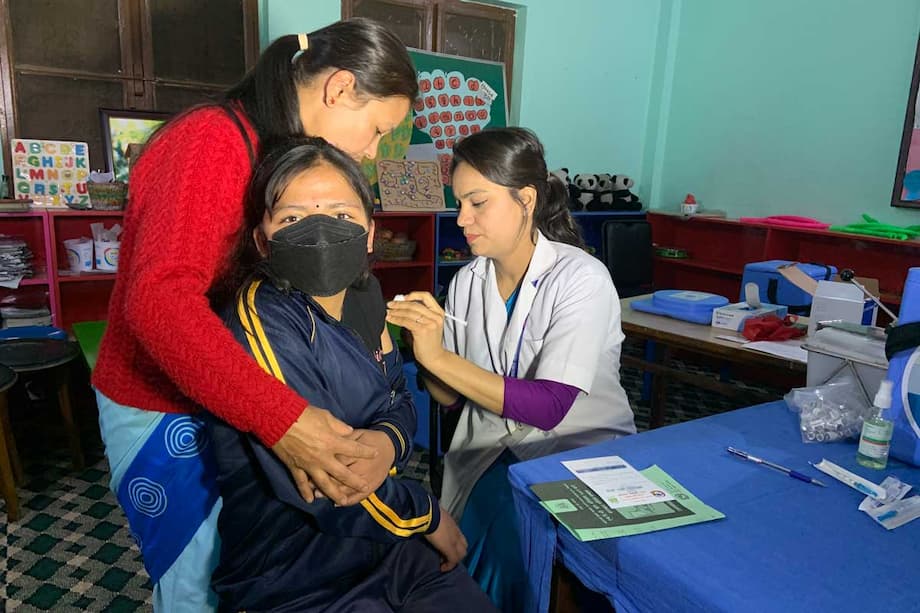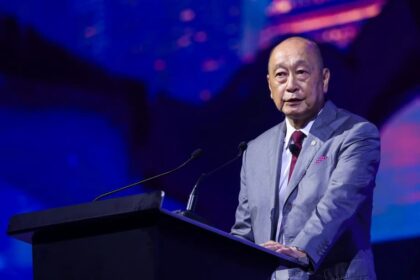A landmark push to prevent cervical cancer
Pakistan will launch its first national human papillomavirus vaccination drive from 15 to 27 September 2025, aiming to protect 13 million girls aged 9 to 14 across Punjab, Sindh, Islamabad Capital Territory and Azad Jammu and Kashmir. Backed by the federal Expanded Programme on Immunisation (EPI) and supported by the World Health Organization, Gavi, UNICEF, Jhpiego and local partners such as the DOPASI Foundation, the campaign marks a turning point in cervical cancer prevention in a country where the disease still claims thousands of lives every year.
Cervical cancer is almost entirely preventable with vaccination and screening. In Pakistan an estimated 5,000 women are diagnosed each year and roughly 3,000 to 3,200 die, a mortality rate among the highest in South Asia. Health officials say late diagnosis and limited access to screening are key drivers. The HPV vaccine closes that gap by stopping infection with high risk virus types long before disease develops. The campaign will deliver a single dose schedule that WHO has endorsed, and it will be free of charge at public sites.
Implementation will be large scale. Schools will serve as the main venue to reach enrolled girls, while outreach teams and Lady Health Workers will visit neighborhoods, madrassas and community centers to reach out of school girls. WHO says more than 49,000 health workers have been trained to prepare for the introduction, while provincial teams will deploy more than 14,000 field workers and supervisors during the first phase. Digital tools, including the Sindh Electronic Immunisation Record, will support tracking and monitoring, and vaccination cards will be issued for families.
Why Pakistan is moving now
Health agencies have warned that without vaccination the burden of cervical cancer in Pakistan could triple over the next seven decades. Cervical cancer is the third most prevalent cancer among women in the country, and the second leading cause of cancer death for women of reproductive age according to federal officials. Pakistan has a large female population at risk over a lifetime, and many women lack access to routine gynecologic care. In that context, immunising girls before adolescence offers a rare chance to prevent a cancer that would otherwise surface in adulthood.
The science behind HPV vaccination
HPV is a common virus transmitted through intimate skin contact. Most infections clear on their own, but persistent infection with high risk types can cause abnormal cell changes that progress to cancer over many years. Two high risk types, 16 and 18, cause around seven in ten cervical cancer cases worldwide. Vaccines that target these types prevent infection and the precancerous changes that follow.
Global guidance now supports a single dose for girls aged 9 to 14, based on evidence that one dose offers long lasting protection that is comparable to two doses in this age group. That change reduces cost and simplifies delivery, especially in low resource settings. The vaccine does not treat existing HPV infection or cancer, which is why the campaign targets girls before exposure. Side effects are usually mild, such as a sore arm or low fever.
Fertility myths have surrounded the HPV vaccine in many countries. Large studies in several regions have found no effect on fertility or future pregnancy. The vaccine contains no live virus and does not alter hormones. Health authorities and clinicians in Pakistan are preparing messages that address parental concerns early and in clear language, drawing on evidence and on the experience of dozens of countries that have used the vaccine for years.
How the campaign will work
The first phase will run from 15 to 27 September 2025 across Sindh, Punjab, Islamabad Capital Territory and Azad Jammu and Kashmir. Health teams will visit public and private schools on preannounced dates. Parents will receive information through schools and through neighborhood outreach ahead of vaccination days. Girls who are not enrolled in school can receive the vaccine at designated community sites, basic health units and during visits by Lady Health Workers and mobile teams.
Delivery will mix fixed sites, outreach and mobile services. In Sindh alone, provincial officials plan to cover all 1,190 union councils across 30 districts using more than 3,600 teams. Microplanning covers mapping of eligible girls, school visit calendars, consent procedures, transport and cold chain for vaccine storage, and safety protocols for managing very rare adverse events. Vaccination cards will be provided so families have proof of dose received and contact details for follow up if needed.
The federal plan links the campaign to routine immunisation. Starting in January 2026, nine year old girls will be offered HPV vaccination through EPI during the school year and at health facilities. The Ministry of Health and partners have outlined a phased expansion to Khyber Pakhtunkhwa in 2026 and to Balochistan and Gilgit Baltistan in 2027, with budget set aside for the next three years. Officials say Pakistan intends to vaccinate about 18 million girls over three years across campaigns and routine services, which would place the country among global leaders in scale.
Reaching girls who are hardest to reach
Out of school girls are a priority. Teams will coordinate with community leaders and civil society groups to schedule sessions at times and places that work for families. Lady Health Workers, who are trusted in many neighborhoods, will mobilise parents, answer questions and accompany girls to nearby vaccination points. In remote or underserved areas, mobile clinics and small outreach teams will bring services closer to households. Partnerships with madrassas and local schools will help reach learners outside the public system.
Building trust and countering myths
Experience from polio and other campaigns shows that confidence is as vital as logistics. Research from a nationwide cross sectional survey in 2022 found that while two thirds of respondents said they would accept HPV vaccination, only a small fraction had ever received it. The top barrier was lack of information, followed by safety worries and false beliefs that the vaccine might affect fertility or encourage early sexual activity. Health officials see the first national campaign as a chance to shape the conversation before misinformation gains traction.
To that end, the DOPASI Foundation and the Federal Directorate of Immunization have convened doctors, journalists and community advocates to plan communication in plain language. Media roundtables in Islamabad and Karachi stressed the role of clinicians, school heads and religious scholars in answering questions. WHO and UNICEF are supporting social mobilisers, training them to respond with empathy and facts, and to refer questions to qualified providers when needed.
Dr Khurram Shahzad, Director Technical at the Federal Directorate of Immunization, has been urging physicians to speak directly to parents about the vaccine. At a recent briefing with partners in Islamabad, he explained why clinical voices matter.
The public trusts doctors more than anyone else on vaccine safety. Their voice is the most effective tool to counter myths.
Stories from survivors also influence attitudes. UNICEF has shared the experience of Shahida Bibi, a mother from Wah in Punjab who endured surgery, radiation and months of treatment after a late diagnosis of cervical cancer. Her family faced financial strain and long travel for care, but today she is cancer free and campaigning for prevention in her community.
I do not want anyone else to go through the pain I endured. If I had access to this vaccine when I was younger, I would not have suffered so much. I urge all the young girls in my village and their mothers to get vaccinated. They are fortunate to have this opportunity.
Health agencies say those messages work best when delivered close to home. School teachers who are trusted by parents, Lady Health Workers who know every lane in a settlement, and midwives who support families create the face to face conversations that build confidence. The campaign will also lean on community networks and civil society groups to host information sessions ahead of school vaccination days.
What parents need to know
Eligibility is simple. All girls aged 9 to 14 who live in Sindh, Punjab, Islamabad Capital Territory or Azad Jammu and Kashmir can receive one dose of the HPV vaccine during the campaign. Vaccination is free under the national program. Most girls will be vaccinated at school during class hours. Parents who prefer a health facility can visit designated EPI centers on campaign days. Families of girls who do not attend school can check with Lady Health Workers, local EPI centers or community outreach points for dates and locations.
Consent procedures will follow school and provincial guidelines. Parents will receive flyers and messaging ahead of time. On vaccination day, nurses or vaccinators will answer questions and screen for any short term illness. No laboratory test or pelvic exam is required. After vaccination, girls are asked to wait briefly for observation, then can return to class or home. Minor side effects can include arm soreness, fatigue or a mild fever that resolves quickly. Serious adverse events are very rare, and safety monitoring will be in place at all sites.
After the campaign, routine services will offer HPV vaccination for girls who turn nine. Catch up sessions will be organised during the school year to reach those who missed the initial dates. Parents should keep the vaccination card in a safe place and take a photo of it in case the paper copy is lost.
Screening still matters for adults
Vaccinating girls today will cut future cases, yet women who are already adults still need screening and care. Screening methods include visual inspection with acetic acid, Pap tests and HPV DNA testing. The goal is to find and treat precancerous changes before they turn into cancer. The World Health Assembly has set a global strategy, often called 90 70 90, that aims by 2030 to have 90 percent of girls vaccinated by age 15, 70 percent of women screened at least once and 90 percent of those with pre cancer or cancer treated. Pakistan’s plan to add the HPV vaccine to routine immunisation aligns with that roadmap, and provincial health departments say they are working to expand screening clinics and referral networks.
A regional and global view
With this launch, Pakistan joins 149 other countries that have introduced the HPV vaccine. The country’s scale places it among the largest first phase introductions anywhere. UNICEF and Gavi point to success stories from across Africa and Asia, where school based delivery has reached high coverage when paired with strong community engagement. Tanzania reports high uptake after careful coordination with education authorities. Bangladesh has moved from pilots to national rollout using schools. Experiences like these have shaped planning in Pakistan, where education departments are central partners.
Partners are also borrowing tactics from other immunisation efforts inside Pakistan. Clinics on wheels supported by Gavi have brought infant and child vaccines to settlements that lack easy access to clinics. The same idea will be tested to reach adolescent girls this month in selected districts. Coordination cells in provincial capitals will monitor daily progress, and partners will visit a sample of sites to troubleshoot barriers in real time.
Challenges ahead and how success will be measured
Any national vaccine launch faces hurdles. Reaching girls who are not in school requires tailored outreach and flexible hours. Keeping vaccines cold in hot weather and during transport needs reliable refrigerators and ice packs. Urban slums, informal settlements and flood affected areas add complexity. Security concerns can limit movement in some locales. To manage these risks, planners have stockpiled cold chain supplies, trained backup teams and built contingency plans to reschedule sessions that are disrupted by weather or local events.
Data quality will receive close attention. The use of digital tools like the Sindh Electronic Immunisation Record enables same day data entry and quick review of coverage gaps. Supervisors will compare school enrolment lists, community registers and tally sheets to make sure the target population is correctly counted. Daily dashboards will track indicators such as the share of schools visited, the proportion of eligible girls vaccinated and any reports of adverse events following immunisation. Independent monitors will validate a sample of the data.
Financing is in place for the near term. Gavi support covers the initial procurement and operational costs, while federal and provincial health departments have set budget lines to continue routine services. The program’s long term success will depend on sustained funding, steady vaccine supply and the ability to maintain coverage year after year as new cohorts of nine year olds become eligible. Officials say the early focus will be on high coverage in the first four regions, followed by an orderly expansion to the remaining provinces in 2026 and 2027, with regular reviews to adjust tactics based on performance.
Key Points
- Pakistan will launch its first HPV vaccination drive from 15 to 27 September 2025, targeting 13 million girls aged 9 to 14 in Sindh, Punjab, Islamabad Capital Territory and Azad Jammu and Kashmir.
- The campaign uses a single dose schedule endorsed by WHO, delivered free under the Expanded Programme on Immunisation.
- More than 49,000 health workers have been trained, and provinces are deploying thousands of field teams, with schools as the main delivery sites.
- Out of school girls will be reached through Lady Health Workers, community sessions, madrassas, mobile teams and fixed sites at health facilities.
- Digital tools such as the Sindh Electronic Immunisation Record will support monitoring, with vaccination cards provided to families.
- Pakistan reports about 5,000 cervical cancer cases and over 3,000 deaths each year, with delayed diagnosis and low screening as major factors.
- Officials plan to integrate HPV vaccination into routine immunisation for nine year old girls from January 2026, and to expand to Khyber Pakhtunkhwa in 2026 and Balochistan and Gilgit Baltistan in 2027.
- Partners aim to reach about 18 million girls over three years, making Pakistan the 150th country to introduce the HPV vaccine.
- Communication efforts focus on countering myths about fertility and safety, elevating doctors and community leaders as trusted voices.
- Screening and treatment services for adult women remain a priority, aligned with the global 90 70 90 targets for elimination of cervical cancer.












